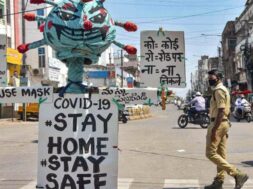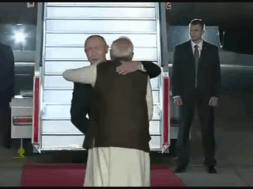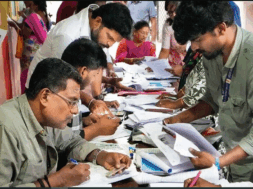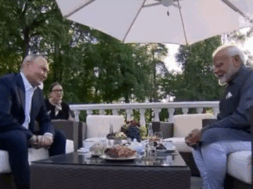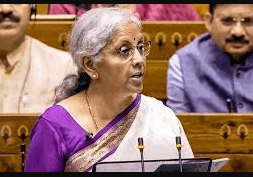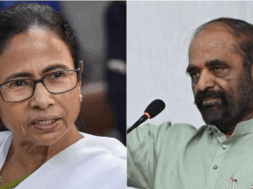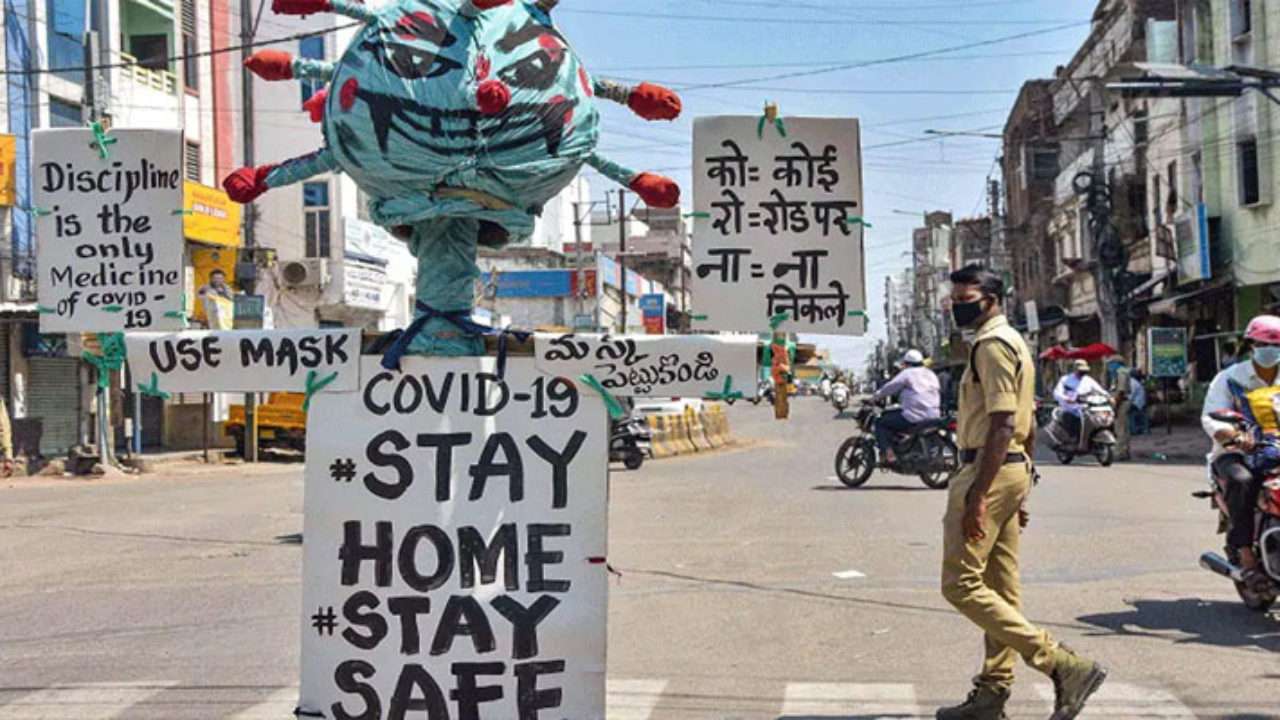
New Guidelines for Home Quarantine: Testing of Asymptomatic Contacts Dropped, Isolation Period 7 Days
Manas Dasgupta
NEW DELHI, Jan 5: Even though country recorded more than 50,000 new Covid cases on Wednesday, the centre issued new guidelines for home quarantine ruling out testing for asymptomatic contacts of positive patients and reducing the isolation period from 10 to seven days after testing positive.
The government also ruled out mixing Covid-19 vaccines for precautionary dose for senior citizens and frontline workers. The Niti Aayog (health) member Dr V K Paul said precautionary Covid-19 vaccine dose would be the same as the one given in the first two doses.
India has reported over 6.3 times rise in Covid-19 cases in the last eight days, the government has informed, while adding that a sharp increase has been witnessed in case positivity from 0.79 per cent on 29 December 2021 to 5.03 per cent on 5 January 2022. Stating that Maharashtra, West Bengal, Delhi, Kerala, Tamil Nadu, Karnataka, Jharkhand and Gujarat have emerged as states of concern due to a surge in Covid-19 cases, the Union health ministry added that 28 districts in the country have been reporting more than 10% weekly positivity, while 43 districts have reported weekly positivity between 5-10%.
India reported 58,097 new Covid-19 cases and 534 deaths in the 24 hours ending 9 am Wednesday. With 15,389 recoveries, the active cases in the country stood at 2,14,004. A total of 2,135 cases of Omicron variant have been detected in the country so far.
In the wake of surging Covid cases, Delhi and Karnataka have imposed weekend curfews on Saturdays and Sundays and Tamil Nadu reintroduced night curfew. Officials in Delhi said all services, except shops selling essential items such as groceries, would be shut over the weekend but the earlier curbs on public transport, whereby the permitted occupancy was restricted to 50 per cent of total seats, has been removed. With Covid cases rising in the city, the Mumbai civic body has made rapid RT-PCR test mandatory for all international passengers landing at the international airport, as per revised guidelines. But health officials fear that a surge in demand for at-home antigen testing kits, apprehension was that many positive cases might be going unreported.
Under the revised guidelines issued by the Centre on Wednesday, asymptomatic contacts of patients will no longer be required to get tested. The government also laid down home isolation rules for mild and asymptomatic cases, while cutting the quarantine period after testing positive from at least 10 days to seven.
“Patients under home isolation will stand discharged and end isolation after at least seven days have passed from them testing positive and they have had no fever for three successive days. They shall continue wearing masks,” the new guidelines by the Union Ministry of Health and Family Welfare say. There is no need for a re-test after the home isolation period is over. The asymptomatic contacts would not be tested but would be required to monitor their health in home quarantine.
The new guidelines replace those issued on April 29, 2021, under which a patient under home isolation was supposed to be “discharged and end isolation” after “at least 10 days” have passed from the onset of symptoms (or from date of sampling for asymptomatic cases) and has had “no fever for 3 days”. Besides, all family members and close contacts were required to be “monitored and tested.”
Earlier, South Africa, which was among the first countries to report Omicron cases, did away the requirement of quarantine for contacts of people confirmed with the infection, and said contacts would be tested only if they showed symptoms.
The Centers for Disease Control and Prevention in the US has also specified now that testing is not required for a Covid patient to emerge from five days of isolation, while halving the isolation time for cases without symptoms or with mild symptoms, and shortening the quarantine period of their close contacts from 10 days to five.
Issuing the revised guidelines Wednesday, the Health Ministry said: “Over the past two years, it has been seen globally as well as in India that a majority of the cases of Covid-19 are either asymptomatic or have very mild symptoms. Such cases usually recover with minimal intervention and accordingly may be managed at home under proper medical guidance and monitoring.”
The revised guidelines identify asymptomatic cases as “laboratory-confirmed cases who are not experiencing any symptoms and have oxygen saturation at room air of more than 93%”. “Clinically assigned mild cases” are defined as “patients with upper respiratory tract symptoms with or without fever, without shortness of breath and with oxygen saturation at room air of more than 93%”. In the earlier guidelines, the oxygen saturation threshold for both category of cases was above 94%.
On clinical management of “mild/ asymptomatic cases”, the guidelines say: “The patient should be clinically assigned as mild/ asymptomatic case by the treating Medical Officer. Further a designated control room contact number at the district /sub district level shall be provided to the family to get suitable guidance for undertaking testing, clinical management related guidance, assignment of a hospital bed, if warranted.”
Patients have to maintain a self-health monitoring chart, with details like date and time, temperature, heart rate (from pulse oximeter), SpO2 (from pulse oximeter); and whether their breathing or condition is “better/ same/ worse.”
The district administration is required to monitor the cases under home isolation on a daily basis. The patients must have a “caregiver”, ideally someone who has completed his Covid vaccination. The guidelines ask people not to rush in for “self-medication, blood investigation or radiological imaging like chest X ray or chest CT scan” without consulting their Medical Officer. They also warn against “overuse” or “inappropriate” use of steroids, saying these were not needed in mild cases and could lead to additional complications.
The guidelines say “immediate medical attention” must be provided in case of symptoms such as unresolved high-grade fever (more than 100° F for more than three days); difficulty in breathing; dip in oxygen saturation below 93% in room air in at least three readings within an hour or a respiratory rate of above 24/ min; persistent pain/pressure in the chest; mental confusion or inability to respond; and severe fatigue and myalgia (muscle pain).
The Centre on Wednesday said the same vaccine will be administered as the third dose of booster or precaution dose of vaccine and no mix and match will be allowed as of now. This means those who have received Covishield as their first and second dose will receive Covishield as their third dose. Similarly, those who have received Covaxin in their first two doses will receive Covaxin in the third dose, Niti Aayog member (health) Dr VK Paul said during the press briefing of the health ministry.
The government has not taken any decision on the mix and match of vaccines in India though Dr Paul had earlier said there was no problem in principle to mix and match. As more data is received about a heterologous approach in the administration of vaccines, decisions would be taken going forward, the Centre said.
The Prime Minister Narendra Modi had on December 25 announced the major upgrade of the Centre’s vaccination policy which has included teens for their first two doses and frontline staff and senior citizens with comorbidities for booster doses. While vaccination for the population belonging to 15 to 18 years has already started from January 3, the administration of booster doses, being termed as precaution dose in India, will start from January 10. The government so far has not made it clear which vaccine will be administered as the booster shot.
India’s decision to administer the third dose comes amid an Omicron alert. On the lines of booster doses being administered in their countries, the government has chosen the most vulnerable section for the third dose.
